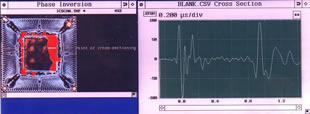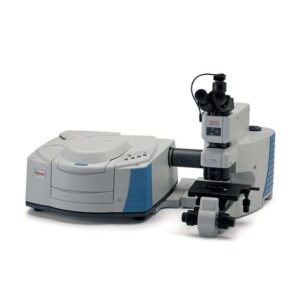
In part one of this series of tips for outsourcing or hiring an electronics failure analysis service, we examined the wide variety of information that should be gathered before sending a failing part out for analysis. The construction of a detailed packet of data, including a problem description, a background or history of the failing device, and any auxiliary documents like layouts or schematics that may be necessary in chasing down the root cause of failure of a device is an involved process – but, once such a dataset has been assembled, the struggles of choosing a lab to entrust it with can begin in earnest. Just as one would not want to drop an expensive supercar off with any random shadetree mechanic, a one-of-a-kind failure should be sent to a lab with the best (and most relevant) capabilities, experience, and a proven track record, in order to help ensure the best results.
When determining which lab has equipment and capabilities that best match up with a given sample, it is often necessary to consider the unique features of the failing device. Analysis of a high speed, low noise amplifier, fabricated using III-V semiconductor technology and used for wireless communications, requires a completely different set of test equipment and techniques than the disassembly of a microelectromechanical system (or MEMS) used for measuring acceleration as part of the accident detection system in a car. To elaborate on the prior example, a lab that has focused on the equipment necessary to test wireless technology – high frequency oscilloscopes, expensive active probing systems, and the like – may not have invested the same amount of money into the precision grinding, polishing, and chemical containment systems that are required for MEMS analysis. Similarly, a lab that primarily deals with counterfeit inspection of legacy electronics may not have the deprocessing or high resolution imaging capability to tackle defects at the more modern technology nodes with features measuring 90 nanometers or smaller. To that end, it will often be necessary to speak with FA engineers at multiple potential suppliers, conducting a sort of survey of the types of techniques that may be available that are applicable to a given failure.
Though electronic failure analysis equipment is important when hiring an electronics failure analysis service, it is not the sole consideration; equally important is determining whether the lab personnel have the experience not only to run the equipment, but to correctly interpret the results. The issue of proper interpretation can become especially pronounced when sending parts to overseas test or FA facilities; though, inevitably, their services may be much cheaper, and some may indeed provide a quality service, their work often fails to go into the level of detail necessary for a truly beneficial failure analysis. Keeping this in mind, it is absolutely necessary to vet the background of a lab’s employees; fortunately, many of the best labs will publish the curriculum vitae of their key employees, allowing potential customers to easily see the breadth and depth of products that the FA engineers have had direct, in-depth exposure to. As an example, a lab boasting an employee who has published several papers on inspecting electronic components for counterfeiting will almost certainly be an excellent source for performing authenticity assessments on samples from a suspect supplier.
Finally, another consideration in evaluating a lab when outsourcing electronics failure analysis is examining their track record of successes and failures. Naturally, coming out and directly asking the marketing staff of the lab is an exercise in futility (unless of course the particular marketing rep is in a particularly disgruntled mood); however, one of the best ways to determine a lab’s history is through word of mouth. Given the vast array of manufacturers and the relatively small number of electronics failure analysis labs, there is a good likelihood that a colleague or other professional contact has used a given lab at some point in the past, and can give a frank evaluation of their capabilities. Indeed, this effect helps to ensure that independent FA labs perform all due diligence and explore all failures to the extent of their capabilities – the last thing any lab wants is to be associated with bad results.
Finally, once the painstaking process of evaluating and choosing a lab has borne fruit, the failing sample can be sent off to be torn down into its constituent parts, deconstructed in detail in order to determine the root cause of the given failure and allowing constructive corrective action to be taken to prevent any further fallout. Choosing a lab for outsourcing electronics failure analysis services is certainly a daunting task, especially given all the various elements that must be considered; fortunately, some labs have taken much of the effort out of the equation, collecting a great deal of the necessary information in one place for the convenience of any potential customers.






